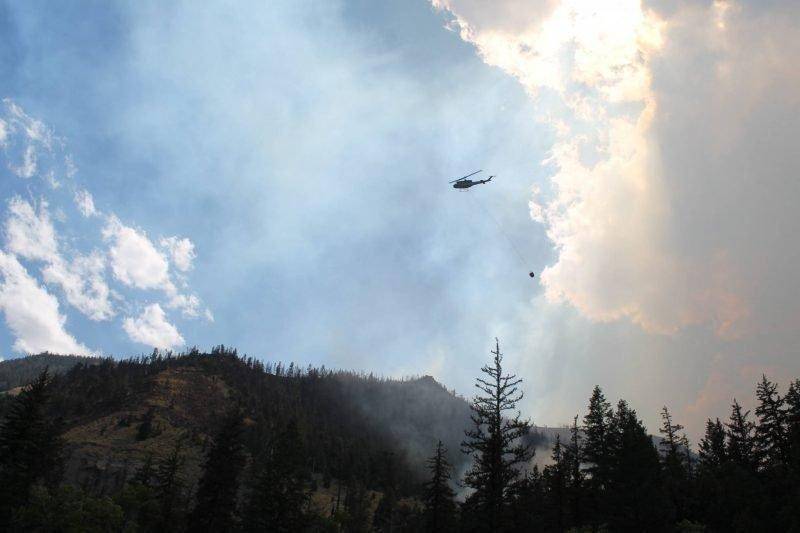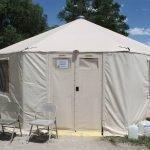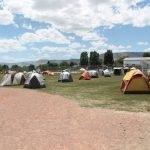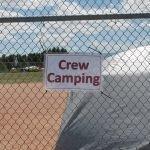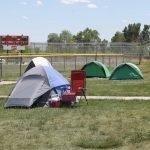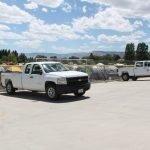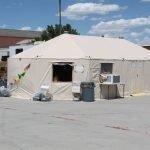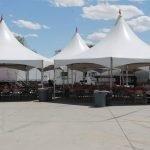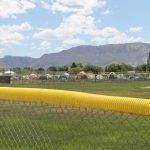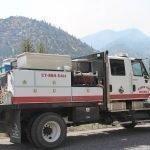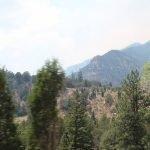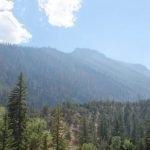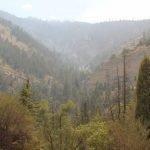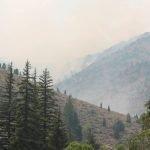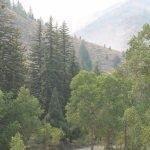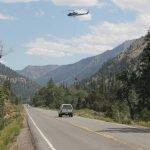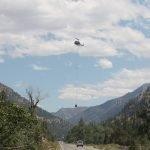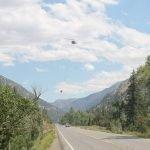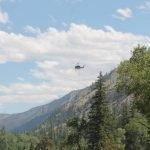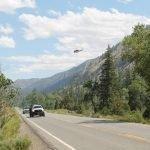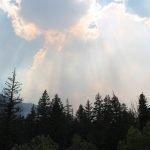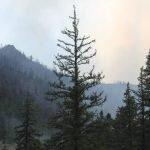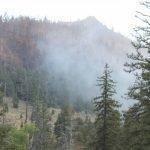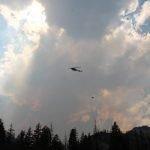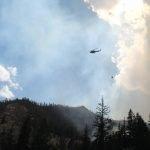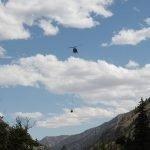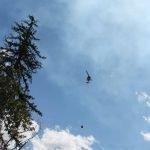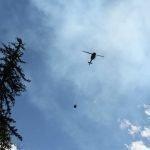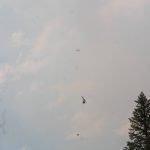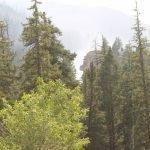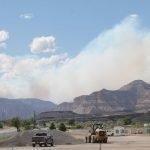Beginning as a prescribed burn on Trail Mountain in early June, flames jumped across Cottonwood Canyon Road to East Mountain on Wednesday, June 6. Then, on June 10, spurred by winds gusting at 55 miles per hour, flames jumped northeast into Meetinghouse Canyon.
The fire has consumed nearly 15,000 acres thus far, charring lands managed by the Manti-La Sal National Forest, BLM Price Field Office, Division of Forestry, Fire and State Lands, and private lands. Highway 31 through Huntington Canyon has been closed at times, with flames being seen as close as 100-200 yards from the highway. Pictures circulating on the web have showcased flames above PacifiCorp’s Huntington Power Plant during the fire’s peak action last week.
Cooler weather over the weekend, including higher relative humidity and thunder cells in the area that at times produced spotted heavy rain, helped fire crews, numbering over 600 at the fire’s peak, gain the upper hand in their containment of the blaze.
“On Saturday, temperatures cooled significantly, the relative humidity came up to 80-90% over the weekend,” said Jesse Bender, public information officer for Great Basin Team 4, whose team took over the management of the fire on June 13. “Our incident meteorologist says the area hasn’t seen RH (relative humidity) that high in several weeks. So, that was a great opportunity for us to take some good aggressive actions against fire spread and put us in a little better place.”
Containment of the fire was at just 10% on Saturday morning, but went up to 17% by Saturday evening. That number shot up to 40% by Sunday evening after temperatures hovered in the mid 70s for most of day. At press time, the fire stands at 43% containment.
Helicopters have been utilized to fight the fire, with as many as eight flying around the affected areas during the peak of the fire. A total of 24 engines and 15 crews have also been on hand to fight the fire.
Many in the community and statewide have asked whether a prescribed burn in June after an already dry winter was in the best interest of the state.
Multiple factors are considered when prescribed burns are planned and then initiated. Rosann Fillmore, public affairs specialist for the Manti-La Sal National Forest, said conditions were “within the prescription” for the Trail Mountain prescribed burn.
“In order to burn alpine fir and other conifer, the weather must be dry and hot, but surrounding vegetation, i.e. aspen, sagebrush, and grasses need to be moist,” she said. “The conditions met the criteria. Surrounding vegetation moisture was at 160%.”
With dry and hot temperatures expected to set in later this week, although not as they were last week, fire officials are optimistic about their efforts to contain the blaze.
“We are hoping that with all the good work we have done so far, and with slightly milder temperatures, that we will be able to corral this fire within the next few days,” Bender said.
With a still visible burn scar from the Seeley Fire from 2012, which burned nearly 50,000 acres just west of the current fire, look for fire fighters and officials to continue their good work to wrap up the Trail Mountain fire.
Stay up to date with fire information at www.etv10news.com and at www.utahfireinfo.gov.

